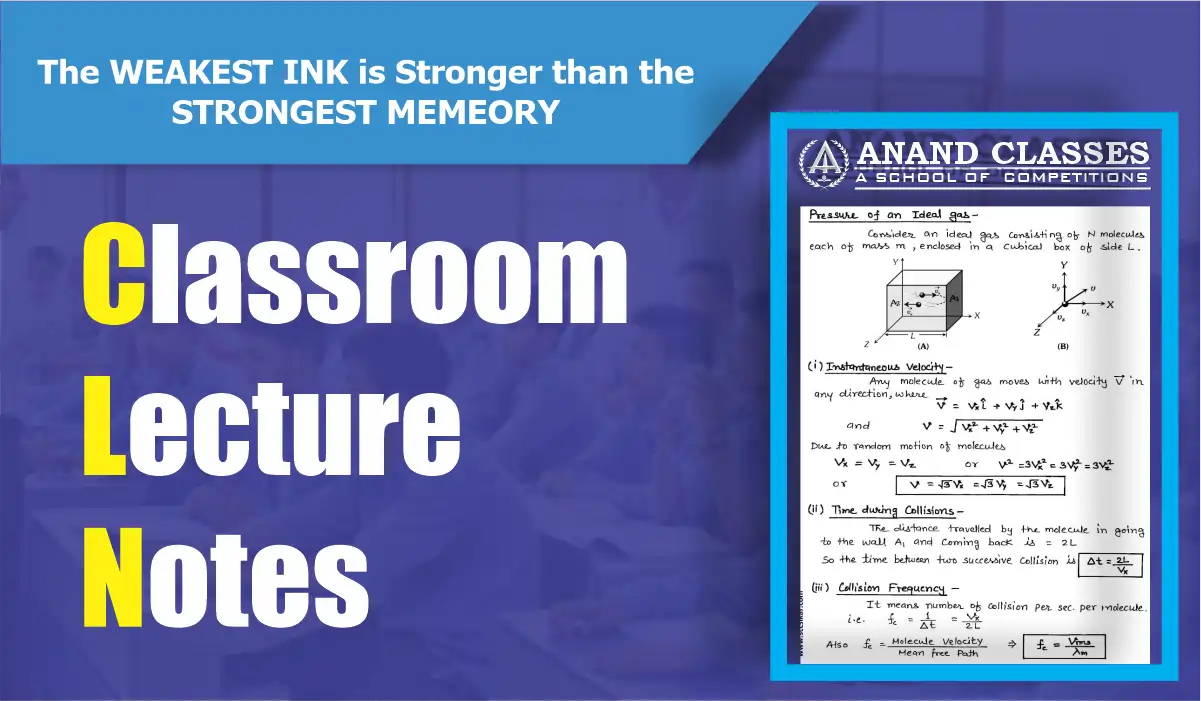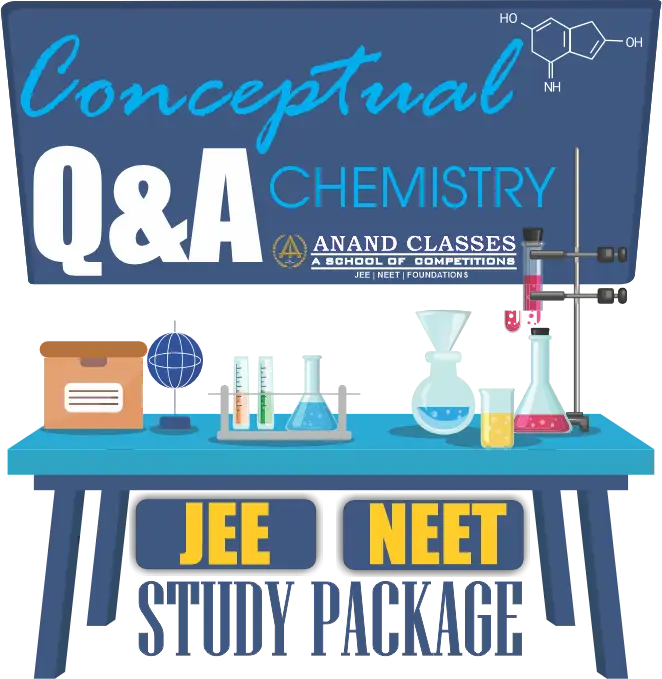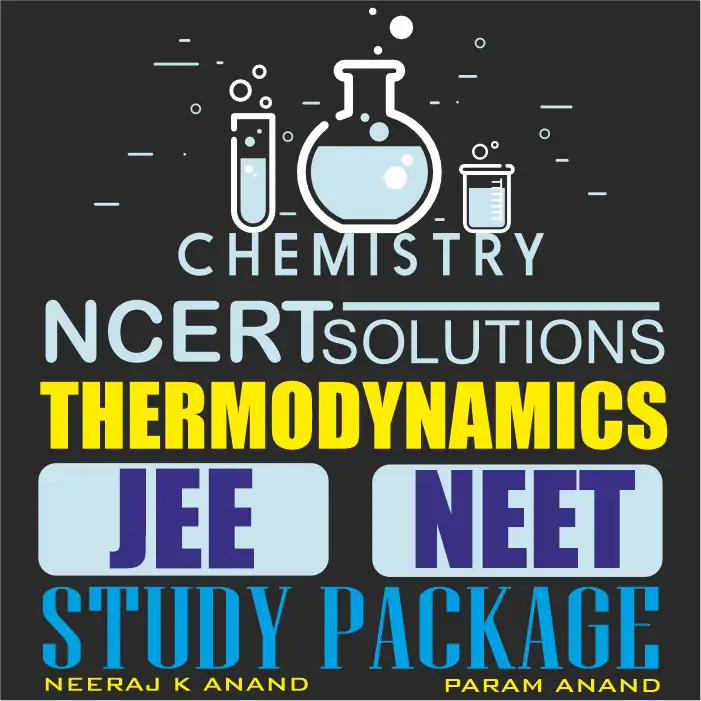Thermodynamics Revision Short Notes Chemistry Class 11 Self Study Material for JEE NEET free pdf download
Access Thermodynamics Revision Short Notes Self Study Material Chemistry Class 11
Access Video Lecture for Class 11 Chemistry of Chapter Thermodynamics
JEE NEET Physics Chemistry Math Science Jalandhar Coaching Tuition Center Classes near me in Jalandhar
ANAND CLASSES offers IIT-JEE (Main & Advanced) & NEET Exams Coaching Center in Urban Estate Phase-II Jalandhar. ANAND CLASSES is the prevalent establishment in the Jalandhar for IIT-JEE (Main & Advanced) & NEET Exams. It is surely famous for its selective class management classes and productive Best IIT-JEE (Main & Advanced) & NEET Exams Coaching institute in Jalandhar.
Best Coaching Center for NEET near me in Jalandhar
The faculty at ANAND CLASSES is highly qualified and vastly experienced in successfully coaching students for IIT-JEE (Main & Advanced) & NEET Exams.
Best NEET Coaching Institute In Jalandhar
NEET Coaching near me
ANAND CLASSES pioneered itself as the best coaching institute for the preparation of IIT JEE (Main + Advanced). We provide systematic coaching and competitive environment to the JEE (Main + Advanced) aspirants with an outstanding preparation capability and infrastructure facilities, which has made it to the first choice of the students. We have a team of highly qualified and competent faculties dedicated towards the students’ performance and provide quality education to the students.
Best Coaching Center for JEE Mains and Advanced near me in Jalandhar
Best JEE Mains and Advanced Coaching Institute In Jalandhar
JEE Coaching near me
Thermodynamics Revision Short Notes Self Study Material Chemistry Class 11 in PDF are available for free download in ANAND CLASSES. The best tool for CBSE students now provides Thermodynamics Revision Short Notes Self Study Material Chemistry Class 11 latest chapter wise notes for quick preparation of CBSE exams and school based annual examinations. Class 11 Chemistry notes on Chapter 6 Thermodynamics class 11 Notes Chemistry are also available for download in ANAND CLASSES website.
Thermodynamics Revision Short Notes Self Study Material Chemistry Class 11
Anand Classes notes are the comprehensive notes which covers the latest syllabus of CBSE and NCERT. It includes all the topics given in NCERT class 11 Chemistry text book. Students can download CBSE quick revision notes from ANAND CLASSES tools and https://anandclasses.co.in website.
Download CBSE class 11th revision notes for Chapter Thermodynamics class 11 Notes Chemistry in PDF format for free. Download revision notes for Thermodynamics class 11 Notes Chemistry and score high in exams. These are the Thermodynamics class 11 Notes Chemistry prepared by team of expert teachers of ANAND CLASSES. The revision notes help you revise the whole chapter in minutes. Revising notes in exam days is on of the best tips recommended by teachers during exam days.
Thermodynamics is the branch of science that deals with the relationships between heat, work, temperature, and energy. It is concerned with how energy is converted from one form to another and how it is transferred between systems.
Thermodynamics Revision Short Notes Self Study Material Chemistry Class 11
Macroscopic and Microscopic Properties
A thermodynamic system is a part of the universe that we are interested in studying. The surroundings are everything outside of the system. Systems can be classified as follows:
- Closed system: No exchange of matter or energy between the system and the surroundings.
- Open system: Exchange of matter and energy between the system and the surroundings is allowed.
- Isolated system: No exchange of matter or energy between the system and the surroundings.
The macroscopic properties of a system are those that can be measured directly, such as pressure, volume, temperature, and amount of substance. The microscopic properties of a system are those that describe the behavior of the individual particles in the system, such as kinetic energy and potential energy.
State Functions
A state function is a property of a system that depends only on the current state of the system and not on how the system reached that state. Examples of state functions include pressure, volume, temperature, and internal energy.
Internal Energy
The internal energy of a system is the total energy of all the particles in the system. It includes the kinetic energy and potential energy of the particles. Internal energy is a state function.
Work
Work is the transfer of energy between a system and its surroundings by the application of a force. Work is done when the force causes the system to move. Work can be positive or negative. Positive work is done when the system does work on the surroundings. Negative work is done when the surroundings does work on the system.
Heat
Heat is the transfer of energy between a system and its surroundings due to a temperature difference. Heat is always transferred from a region of higher temperature to a region of lower temperature. Heat is a state function.
The First Law of Thermodynamics
The first law of thermodynamics states that the total energy of an isolated system is constant. This means that energy can neither be created nor destroyed, but only converted from one form to another. The first law of thermodynamics can be expressed mathematically as follows:
ΔU = q + w
where:
- ΔU is the change in internal energy of the system
- q is the heat absorbed by the system
- w is the work done on the system
Reversible and Irreversible Processes
A reversible process is a process that can be exactly reversed. An irreversible process is a process that cannot be exactly reversed. All real processes are irreversible.
Types of Thermodynamic Processes
There are four main types of thermodynamic processes:
- Isothermal process: A process in which the temperature of the system remains constant.
- Adiabatic process: A process in which no heat is transferred between the system and the surroundings.
- Isochoric process: A process in which the volume of the system remains constant.
- Isobaric process: A process in which the pressure of the system remains constant.
Applications of Thermodynamics
Thermodynamics has many applications in chemistry, including:
- Predicting the spontaneity of chemical reactions
- Calculating the enthalpy change of chemical reactions
- Designing heat engines and refrigerators
- Understanding the behavior of gases and liquids
Conclusion
Thermodynamics is a fundamental branch of chemistry that deals with the relationships between heat, work, temperature, and energy. It has many applications in chemistry and other fields.
Additional Details
Here are some additional details about some of the important concepts in thermodynamics:
- Enthalpy: Enthalpy is a state function that is defined as the sum of the internal energy of a system and the product of the system’s pressure and volume. It is denoted by the symbol H. The change in enthalpy of a system during a process can be calculated using the following equation:
ΔH = ΔU + PΔV
- Spontaneity: A spontaneous process is a process that occurs naturally without any outside intervention. The second law of thermodynamics states that the entropy of an isolated system always increases over time. This means that spontaneous processes are always accompanied by an increase in entropy.
- Chemical reactions: Thermodynamics can be used to predict the spontaneity of chemical reactions. A chemical reaction will be spontaneous if the total change in entropy of the system and the surroundings is positive.
- Heat engines: A heat engine is a device that converts heat energy into mechanical energy. The efficiency of a heat engine is limited by the Carnot cycle. The Carnot cycle is a theoretical cycle that is the most efficient possible cycle for a heat engine.
- Mayer’s formula: Mayer’s formula is a relationship between the molar specific heats of gases. It states that the difference between the molar specific heat at constant pressure (Cp) and the molar specific heat at constant volume (Cv) is equal to the gas constant (R).
- Cp – Cv = R
- Carnot engine: The Carnot engine is a theoretical heat engine that is the most efficient possible cycle for a heat engine. The Carnot cycle consists of four reversible processes:
- Isothermal expansion
- Adiabatic expansion
- Isothermal compression
- Adiabatic compression
- Carnot theorem: The Carnot theorem states that all reversible heat engines operating between the same two temperatures have the same efficiency.
- Entropy: Entropy is a state function that is a measure of the disorder of a system. The second law of thermodynamics states that the entropy of an isolated system always increases over time.
- Gibbs free energy: Gibbs free energy is a state function that is used to predict the spontaneity of chemical reactions at constant temperature and pressure. It is denoted by the symbol G. The change in Gibbs free energy of a system during a process can be calculated using the following equation:
- ΔG = ΔH – TΔS
where T is the temperature of the system.
- Bond energy: Bond energy is the amount of energy required to break a chemical bond. It is a measure of the strength of a chemical bond. Bond energies can be used to calculate the enthalpy change of chemical reactions.
Applications of Thermodynamics in Chemistry
Thermodynamics has many applications in chemistry, including:
- Predicting the spontaneity of chemical reactions: Thermodynamics can be used to predict whether a chemical reaction will occur spontaneously under a given set of conditions. This is important for designing chemical processes and for understanding the behavior of chemical systems.
- Calculating the enthalpy change of chemical reactions: The enthalpy change of a chemical reaction is the amount of heat that is absorbed or released during the reaction. Thermodynamics can be used to calculate the enthalpy change of a reaction from the bond energies of the reactants and products.
- Designing heat engines and refrigerators: Thermodynamics can be used to design heat engines and refrigerators that are more efficient.
- Understanding the behavior of gases and liquids: Thermodynamics can be used to understand the behavior of gases and liquids, such as their compressibility and their tendency to expand. This is important for designing chemical engineering equipment and for understanding the behavior of chemical systems.
Conclusion
Thermodynamics is a powerful tool that can be used to understand and predict the behavior of chemical systems. It has many applications in chemistry and other fields.
Introduction to Thermodynamics:
- Thermodynamics is the branch of science that deals with energy and its transformations.
- Key concepts: System, Surroundings, Universe, State of a System.
Thermodynamic Terms:
- Internal Energy (U): The sum of all microscopic forms of energy in a system.
- Enthalpy (H): H = U + PV (Pressure-Volume work).
- Heat (q) and Work (w): Transfer of energy between the system and surroundings.
- Heat transfer conventions: Endothermic and Exothermic processes.
First Law of Thermodynamics:
- The law of conservation of energy.
- ΔU = q – w, where ΔU is the change in internal energy, q is heat, and w is work.
- The first law explains energy transfer but doesn’t provide information about the direction of a process.
Enthalpy:
- Enthalpy change (ΔH) is used in constant pressure processes.
- ΔH = qp (heat at constant pressure).
- ΔH = ΔU + PΔV.
Measurement of ΔU and ΔH:
- Calorimetry: Determining heat transfer through temperature changes.
- Bomb calorimeter and coffee cup calorimeter.
Enthalpy Changes for Chemical Reactions:
- Standard Enthalpy of Formation (ΔH°f): The enthalpy change when one mole of a compound is formed from its elements in their standard states.
- Hess’s Law: The enthalpy change of a reaction is the same whether it occurs in one step or several steps.
- Standard Enthalpy of Combustion (ΔH°c): Enthalpy change when one mole of a substance undergoes complete combustion.
Second Law of Thermodynamics:
- Entropy (S) and the concept of disorder.
- The law states that energy spontaneously tends to disperse or become more chaotic.
- Processes occur in a direction that increases the overall entropy of the universe.
Gibbs Free Energy (G):
- ΔG = ΔH – TΔS, where ΔG is the change in free energy.
- Predicts the spontaneity and feasibility of a reaction at constant temperature and pressure.
- Negative ΔG: Spontaneous and exergonic.
- Positive ΔG: Non-spontaneous and endergonic.
Third Law of Thermodynamics:
- Entropy approaches zero as the temperature approaches absolute zero.
Entropy Changes in Chemical Reactions:
- Entropy change for a reaction is calculated using the standard molar entropy values.
- ΔS° = ΣS°(products) – ΣS°(reactants).
Gibbs-Helmholtz Equation:
- ΔG = ΔH – TΔS and the equilibrium constant (K).
Spontaneity and Equilibrium:
- Relates ΔG to the equilibrium constant (K).
- If Q (reaction quotient) = K, the system is at equilibrium.
- If Q < K, the reaction proceeds forward.
- If Q > K, the reaction proceeds backward.
Factors Affecting Spontaneity:
- Temperature, pressure, and concentration effects on ΔG.
- Le Chatelier’s principle and its application to equilibrium.
Spontaneity and Reversible Processes:
- Reversible processes are idealized and can be reversed by an infinitesimal change in external conditions. They are used to understand the thermodynamic behavior of real processes.
- Irreversible processes are spontaneous and lead to an increase in the entropy of the universe.
Carnot Cycle:
- An idealized reversible cycle used to understand the maximum efficiency of a heat engine.
- Consists of four reversible processes: isothermal expansion, adiabatic expansion, isothermal compression, and adiabatic compression.
- The efficiency of a Carnot engine depends only on the temperatures of the hot and cold reservoirs.
Refrigerators and Heat Pumps:
- These devices operate in a manner opposite to heat engines. They use work to transfer heat from a cold reservoir to a hot one.
- The coefficient of performance (COP) is a measure of their efficiency.
Thermodynamic Equations:
- Maxwell’s Relations: A set of equations that relate thermodynamic variables, including temperature, pressure, volume, and entropy.
- Clausius-Clapeyron Equation: Describes the variation of vapor pressure with temperature for a phase transition.
Phase Transitions:
- Solid to liquid, liquid to gas, and other phase transitions involve changes in enthalpy and entropy.
- The phase diagram represents the regions where different phases are stable under different conditions of temperature and pressure.
Chemical Equilibrium and Thermodynamics:
- The relationship between ΔG and the equilibrium constant K for chemical reactions.
- Predicting the direction of a chemical reaction based on ΔG and K.
Standard Conditions and Standard State:
- Standard temperature and pressure (STP).
- The concept of the standard state for gases (1 atm and 298 K).
CBSE Class 11 Chemistry Revision Notes Chapter 6 Thermodynamics
CBSE Class 11 Chemistry Revision Notes Chapter 6 Thermodynamics are one of the most important tools in study material that students can get as it will aid them to study properly and reduce any stress that they face during the academic year before.
ANAND CLASSES provides chapter-wise Chemistry Revision Notes and short key notes for the CBSE board examination in free downloadable PDF format so students can practice it for their studies and get better in their board examinations. The CBSE Class 11 Revision notes are made for some important subjects such as Maths, English, Hindi, Physics, Chemistry and Biology. These core subjects can be very difficult for students and the revision notes for every chapter will enable them to have a skilful studying pattern with which they can achieve so much better and also enjoy studying the subject.
Thermodynamics Chapter 6 Revision Short Notes Self Study Material pdf Chemistry Class 11
One of the most essential aspects when studying in Class 11, is to make Chemistry Revision Notes. Students who make Chemistry Revision Notes generally are capable to get good marks as they contain the difficulties and little details that could not be included in the textbook being used. The NCERT is the directorate that conducts the CBSE board, which is a nationwide curriculum followed by lacs of students in the country. ANAND CLASSES provides CBSE Class 11 Chapter 6 Thermodynamics revision notes that can be used as per the students’ requirements. The Chapter 6 Thermodynamics revision notes can be simply downloaded in a PDF format directly with the weblink. The CBSE Chemistry Revision Notes are available from class 6 to 10 for all their subjects while Class 11 and 12 students can refer revision notes for the core subjects like Maths, Physics, Chemistry and Biology.
Importantance of CBSE Class 11 Chemistry Revision Notes Chapter 6 Thermodynamics for Students
All the revision notes have been made in accordance with the latest CBSE syllabus so that there is no mistake if changes have been created by the CBSE board. The Chapter 6 Thermodynamics revision notes have been made by teachers who have vast experience and know exactly what is needed. Further, students will be able to see chapter-wise Chemistry Revision Notes with short key notes that could raise their preparations. The CBSE Chemistry Revision Notes are prepared with each chapter explained in a concise manner from the latest edition of the books. The CBSE Class 11 Chemistry Revision Notes Chapter 6 Thermodynamics are available in a PDF format so that students can simply refer to it whenever required thorough ANAND CLASSES. The teachers who prepare these Chemistry Revision Notes have done so after rigorously going through the last ten year’s question papers and then taking them down. Because of the large amount of content present in most of the books, it can be difficult for students to keep up with all of it. The Chemistry Revision Notes can play a role in helping easier studying methods. ANAND CLASSES is one of India’s leading education platforms for students all over the country.
Why Is CBSE Chemistry Revision Notes Chapter 6 Thermodynamics Important?
The studying process is student-specific I.e., some students prefer kinesthetic studying, some are auditory students, and others may find visual studying to be more efficient. But these different processes are just a part of the studying experience, the other important aspect is the revision. Students have to strengthen their studying, hence revisions are a way to begin about this phase.
- Enables the student to strengthen their studying
- Students become more confident during examinations
- Exam stress and anxiety are decreased
- Reduced chances of making easy, but conspicuous mistakes
- Saves valuable time during examinations
- The correctness of answers are higher























